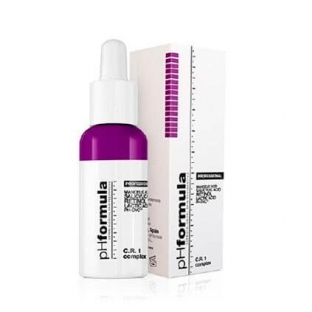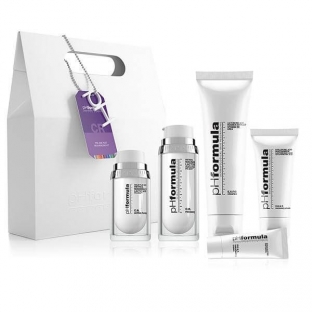Slight reddening of the skin in conditions of high, low temperatures, during emotional outbursts or after traumatic procedures – absolutely normal. However, if the redness is chronic and does not depend on the impact of such factors, the cause of such an unnatural color of the skin of the face in many cases is an inflammatory condition – rosacea. This dermatological problem is quite common and is associated with an abnormal increase in the blood vessels of the face, which are the cause of chronic reddening of the skin. Properly selected therapy will save patients from the psychological discomfort they face with such disorders.
Problem identification: main features and subtypes of rosacea
Rosacea is characterized by a pronounced reddening of the skin of the face, on which vessels are also often visible. In addition, the characteristic signs of rosacea are also irritation of the skin, a burning sensation, the presence of papules, thickening of the skin, swelling of the face, as well as an increase in the degree of redness after eating hot or spicy foods. In some cases, patients also complain of a burning sensation in the eyes.
The reason why blood vessels enlarge and lead to the symptoms of rosacea has not yet been established.
Generally accepted classification of rosacea:
- subtype 1 – chronic reddening of the skin with visible blood vessels;
- subtype 2 – constant reddening of the skin, the presence of tubercles and papules;
- subtype 3 – chronic redness and thickening of the skin (especially around the nose);
- subtype 4 – redness of the skin, itching, burning and redness of the eyes.
Rosacea is most common among women over 30 years of age, but men have more severe symptoms of the disease. Unfortunately, no effective treatment for rosacea has yet been found, but there are procedures that can control the course of the disease or minimize its symptoms.
CR1 complex for the treatment of skin prone to rosacea
The latest development in this field is the pHformula skin renewal treatment, which is performed using effective preparations containing a unique combination of active ingredients. The application of active solutions is carried out using a layering technique, which ensures controlled penetration of active ingredients into the skin.
The use of this layering technique is made possible by the fact that most of the active components of the pHformula renewal system are self-neutralizing. The application of several layers at once provides a controlled increase in the penetration of active components. The number of these layers depends on the needs, the desired results and the individual sensitivity of the patient.
CR complex is intended primarily for the treatment of erythemotelangiectasia type rosacea (ETR). This is the most common type of rosacea, where there is persistent redness of the skin on the nose, cheeks, or chin. It often shows small blood vessels (telangiectasias). Treatment is often limited to avoid complications. To reduce redness and prevent recurrence, the complex includes antimicrobial components.

Indications for the use of the CR1 complex:
- redness;
- skin sensitivity;
- telangiectasia;
- rosacea.
The main active components of the CR1 complex:
- mandelic acid (mild acid with powerful antibacterial properties);
- salicylic acid (powerful keratolytic effect, ensures more effective penetration of other active ingredients into the skin);
- retinol (replenishes the lack of vitamin A and improves the condition of sensitive skin with chronic redness caused by rosacea);
- lactic acid (facilitates the exfoliation of dead cells by destroying demosomes and moisturizes the skin);
- PH-DVCTM (a unique ingredient delivery complex that enhances the penetration of active ingredients).
Before starting the procedures, the skin should be strengthened using CR recovery, which contains the same active ingredients as in the C.R 1 complex.
A simple protocol is followed for the skin renewal procedure for rosacea.
- Cleansing
- Degreasing
- Update
- Soothing and moisturizing
- Protection
2-3 weeks prior to professional rosacea treatments, it is recommended to first strengthen the skin using CR active as part of the home pre-peel treatment, which contains components similar to those of the CR1 complex.
Post-treatment care for skin prone to chronic redness
As a rule, procedures using the CR1 complex are well tolerated by patients, however, the following temporary reactions may occur after they are performed:
- redness;
- tingling or burning sensation;
- tightness;
- frost effect (minor coagulation of stratum corneum proteins);
- flaking;
- dryness.
After the procedure, avoid prolonged sun exposure and use UV protect SPF 30+ sunscreen.
To maintain results and speed up skin recovery after pHformula with CR1 complex, the patient is prescribed:
- EXFO cleanse to gently cleanse and exfoliate the skin;
- CR recovery to soothe and hydrate the skin;
- POST resurfacing cream to protect dry and sensitive skin.
- UV protect sunscreen SPF 30+.

PHformula treatment with CR1 complex – effective and safe method of combating the manifestations of rosacea, especially chronic reddening of the skin and telangiectasia. To get more detailed information about the features of this procedure, purchase products and receive appropriate training, contact the official representative of pHformula in Ukraine – company "Cosmetic Group".









Add a comment